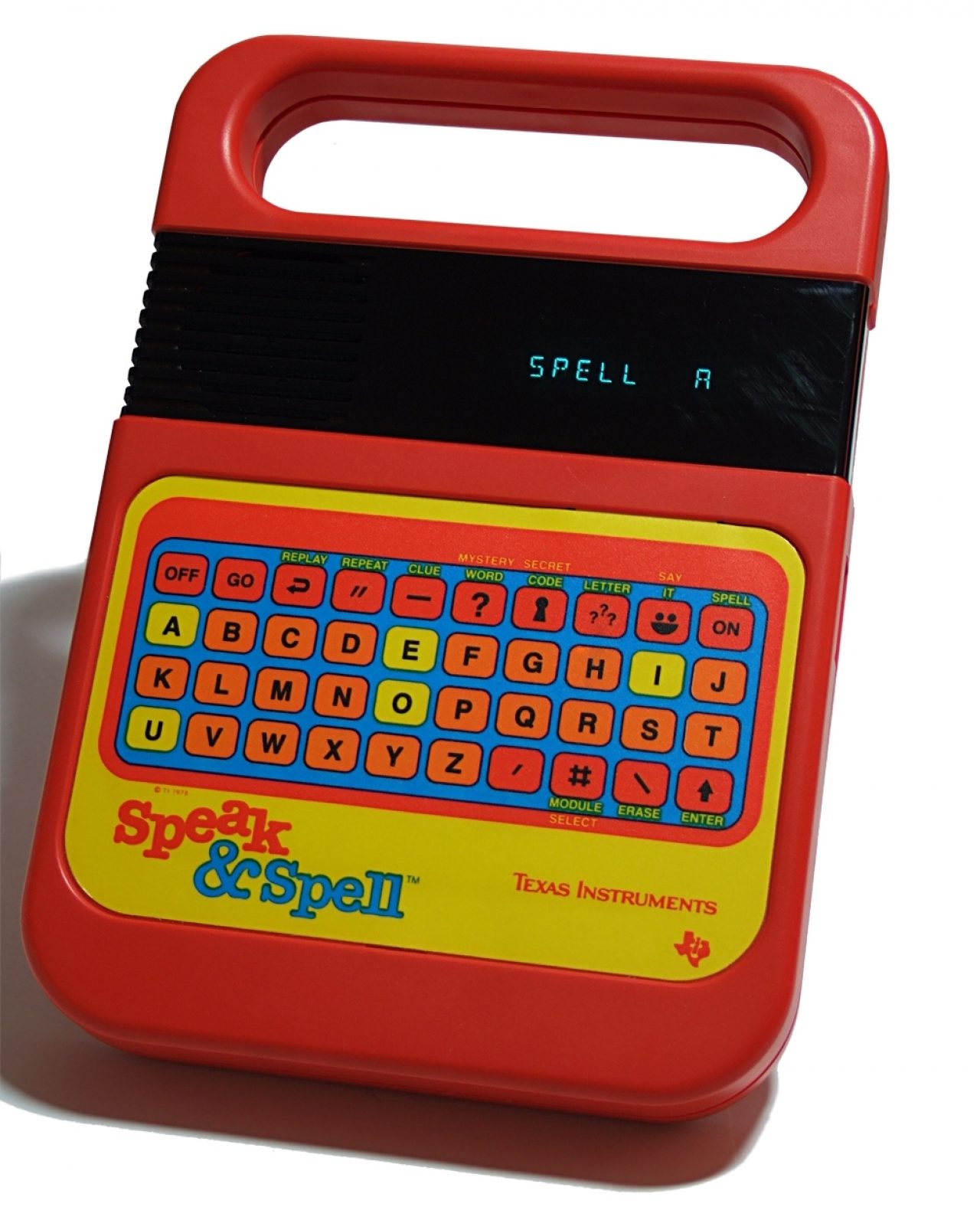36 Years Since the First Speak & Spell
Speak & Spell was a handheld computer for children with several exciting traits: a display screen, program cartridges and an artificial human voice.
At the 1978 Consumer Electronics Show, Texas Instruments introduced a product that would prove a true game-changer in educational toys: the Speak & Spell. Speak & Spell was basically a handheld computer intended for children, with several specific and exciting traits: it was one of the first mobile devices with a display screen; the user could easily exchange program cartridges; and it was the first time that an artificial human voice was replicated on a microchip.
At Texas Instruments, the Speak & Spell project was headed by engineer Paul Breedlove starting in 1976. For nearly all of their existence, Texas Instruments is one of the largest manufacturers of semiconductors, microchips, and processors in the world; they are particularly famous, at least among the general populace, for their calculators. Speak & Spell introduced Texas Instruments to a new audience: children.
Speak & Spell was intended to teach young children to properly spell and pronounce popular and important words. An impressive library of game cartridges available, offering kids the opportunity to play games touching on a variety of subjects: prefixes and suffixes, solving codes, testing memory skills, and even touch-typing. Between 1978 and 1992, a number of variants would be released which would either improve on the original model or venture into specific subject areas like math, reading, and music.
As a child of the 1980s, I have fond memories of playing with several iterations of the Speak & Spell. There was something magical about that small red machine that fit so comfortably in my chubby hands. It was made for me, for kids, which was wonderful. There was cool, bright turquoise of the letters appearing on the screen. I remember giggling at the synthesized voice that spoke words and spelled out letters, seeming at the time to imbue the device with a personality.
Today, there are a myriad of electronic language and education toys aimed at children, covering a wide array of subjects, from English and linguistics to math and music and science. Children today, surrounded with the latest technology from birth, can often use the same computers and tablets that their parents do, and without much of a learning curve. Next to the Leapfrog and iPad, the original Speak & Spell may seem clunky and outdated, but it was top-of-the-line when it first appeared at CES 36 years ago, and it paved the way for the educational devices we have embraced in the years since.

 Member Connect
Member Connect